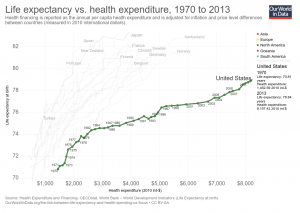
This blog looks to post materials that contain data in some form that can be used in classrooms whenever possible. But, we need to also recognize that climate change is already impacting people. Climate Central’s post, Alaska Towns At Risk from Rising Seas Sound Alarm, provides us with this context.
According to the Army Corps of Engineers, 31 Alaskan communities face “imminent” existential threats from coastline erosion, flooding and other consequences of temperatures that are rising twice as quickly in the state as the global average. A handful — Kivalina, Newtok, Shishmaref and Shaktoolik — are considered in particularly perilous positions and will need to be moved.
Some of the reasons these towns need to be moved:
As the coastal buffer of sea ice retreats, towns are more vulnerable to storms and coastline erosion. Many key structures are built on permafrost, which is also melting, causing the buildings to subside or even crumple completely. And a succession of mild years — 2016 was nearly 6F warmer than the long-term average — is disrupting the patterns of wildlife in an environment where people rely upon the animals they catch for sustenance.
Climate Central’s post is worth reading. Recall our post that melting permafrost is part of a feedback loop.



 The EPI has detailed report on CEO pay,
The EPI has detailed report on CEO pay, 



 Where do carbon emissions go seems like an obvious question. Into the air of course. If so, then one would expect a near perfect linear relationship between emissions and atmospheric CO2. The graph here has yearly carbon emissions in million tonnes per year (as reported by the
Where do carbon emissions go seems like an obvious question. Into the air of course. If so, then one would expect a near perfect linear relationship between emissions and atmospheric CO2. The graph here has yearly carbon emissions in million tonnes per year (as reported by the